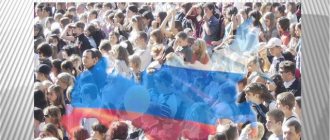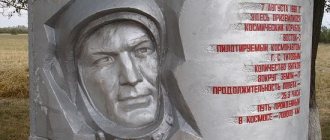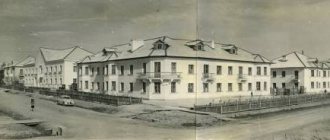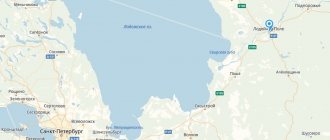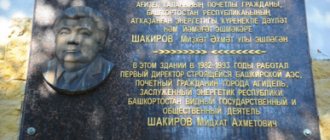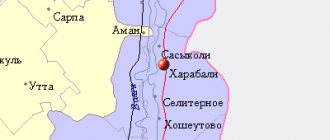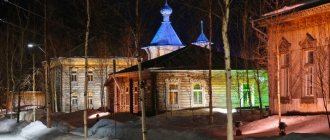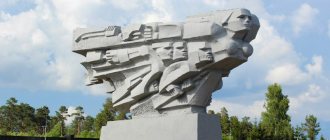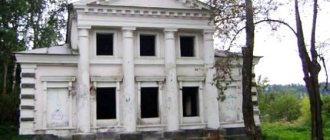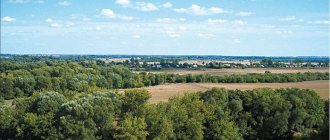This term has other meanings, see Klintsy (meanings).
| City Klintsy Flag | Coat of arms |
| A country | Russia, Russia |
| Subject of the federation | Bryansk regionBryansk region |
| Urban district | Klintsy city |
| Coordinates | 52°45′10″ n. w. 32°14′10″ E. long / 52.75278° north w. 32.23611° east. d. / 52.75278; 32.23611 (G) [www.openstreetmap.org/?mlat=52.75278&mlon=32.23611&zoom=12 (O)] (Z)Coordinates: 52°45′10″ N. w. 32°14′10″ E. long / 52.75278° north w. 32.23611° east. d. / 52.75278; 32.23611 (G) [www.openstreetmap.org/?mlat=52.75278&mlon=32.23611&zoom=12 (O)] (I) |
| Chapter | Shkuratov Oleg Pavlovich |
| Based | in 1707 |
| City with | 1925 |
| Square | 64 km² |
| Center height | 150—160 |
| Climate type | temperate continental |
| Population | ↗61,916[1] people (2016) |
| National composition | Russians, Ukrainians, Belarusians and others |
| Confessional composition | Orthodox and other denominations |
| Names of residents | Klinchane, Klinchanin, Klinchanka |
| Timezone | UTC+3 |
| Telephone code | +7 48336 |
| Postal codes | 243140—243146 |
| Vehicle code | 32 |
| OKATO code | [classif.spb.ru/classificators/view/okt.php?st=A&kr=1&kod=15415 15 415] |
| Official site | [www.klinci.ru nci.ru] |
| Klintsy Moscow |
| Bryansk Klintsy |
Audio, photo and video
on Wikimedia Commons
K: Settlements founded in 1707
Klintsy
- a city in Russia, the administrative center of the Klintsy district and the City Okrug of the city of Klintsy, Bryansk region.
The population of the city is 61,916[1] people. (2016), with suburbs - 69,391[1] people. (2016) (the second most populous city in the Bryansk region). The city is a trade and economic center of the southwestern regions of the Bryansk region.
The city is located on the Moskovka River (Turosna Kartavoy), a tributary of the Turosna River in the Dnieper basin, 172 kilometers[2] west of Bryansk, 5 km from the M13
Bryansk - Novozybkov - border of the Republic of Belarus.
The city has a railway station of the same name on the Moscow Railway (on the Bryansk - Gomel line).
Story
The settlement of Klintsy was founded in 1707 by Old Believers peasants and was named after the first settlers (Klinets) in the plural.
In 1782 Klintsy became a settlement as part of Surazhsky district. At the same time, several printing houses opened here, publishing mainly liturgical Old Believer books. The development of printing contributed to the high literacy of the population of Klintsy.
In 1782-1796. Klintsy is part of the Novgorod-Seversky governorship, and in 1796-1802. - in the Little Russian province. Since February 27, 1802, the settlement of Klintsy was in the Chernigov province, Surazh district.
Since the 1830s, textile production appeared in Klintsy, which gradually became the most important industry in the city. By the end of the 19th century, more than 90% of the textile industry of the Chernihiv region was concentrated here. The city was called "Manchester of the Chernigov province."
Electricity in Klintsy first appeared at the factory of I.P. Mashkovsky in 1886. In 1900, the settlement was electrified, there were 10 cloth factories, 3 hosiery establishments, 11 tanneries, two iron foundries, 1 linen factory, 1 oil mill, 2 soap factories, three brick factories; several branches of various banks, a post office, a telegraph office, a pharmacy and a pharmaceutical warehouse, three commission offices, five churches: Ascension and Trinity Edinoverie, Peter and Paul Orthodox, Pokrovo-Nikolsk and Preobrazhenskaya Old Believers; three synagogues. Outside the city there were two Old Believer monasteries (Krasnoborsky St. John the Baptist Monastery, or “The Strip”, and the Nikolo-Pustynsky Monastery. In 1916, Klintsy began publishing its own “Klintsy newspaper”.
In 1918, according to the Treaty of Brest-Litovsk, the city was part of the Ukrainian People's Republic, Chernigov province, Surazh district. Since July 11, 1919 - as part of the Gomel province of the RSFSR, Surazh district. Since 1921, the settlement of Klintsy became a district center within the Gomel province.
In 1925, Klintsy received city status[3]. Since January 14, 1929, the city of Klintsy was part of the Western Region of the RSFSR, where it was the center of the Klintsy Okrug and Klintsy District. Since 1936, Klintsy has been a city of regional subordination. Since October 19, 1937, the city of Klintsy was part of the Oryol region, and since July 5, 1944, it has been part of the Bryansk region.
During the Great Patriotic War, the city was occupied by Nazi troops from August 20, 1941 to September 25, 1943.
In the year of the tercentenary of its founding (2007), a monument in the form of a bell depicting the family of the city’s founder was erected at the supposed birthplace of the settlement.
Klintsy 50 years ago. Based on materials from the Klintsy newspaper “Trud”
The main yellowed pages of the fifty-year-old newspaper are full of loud headlines with calls from the party, obligations of teams and individual leaders to fulfill and exceed the next five-year plan. Accelerating rates, growth of milk yield and acreage. There was and could not be news about rising unemployment, financial crises (If only in decaying America or Europe), inflation and rising food prices. Iron stability, 100% employment and confidence in the future. As a historical source, these materials, of course, have their value, but we were drawn to the middle and last pages of the newspaper's 1970 file. As a rule, they published more vital and down-to-earth news there.
"Zarnitsa" A serious war game.
February 1970. Klintsov schoolchildren play Zarnitsa. Photo by V. Belyaev
On one of the Sundays in February, residents of Klintsy observed the following picture: slender and not very ranks of Youth Army members of Klintsy schools, with a total number of about three hundred “combat” units, with full “layout”, in maskhalats, with wooden machine guns and machine guns, marched to Stodol, to Lenin Square ...To the sounds of the orchestra, they laid garlands of glory at the foot of the Ilyich monument, listened to welcoming speeches from the first secretary of the city committee of the Komsomol L. Fedorova, the instructor of the CPSU Civil Code G. Sokeria and went to the “battlefield”.
The enemy is cunning. He dug in about three hundred meters from the road and is not going to give up his lines just like that. Flushed from the cold and the excitement of battle, shouting “Hurray”, the opposing side rushes towards the enemy through the loose snow. Machine guns fire and machine guns fire bursts of fire. Rockets fly up and the command “Gas” is heard. A smoke screen spreads over the battlefield... The fighters put on gas masks and continue the attack until they come across a minefield. Sappers are sent forward, who deftly detect mines, neutralize them and make passages for their comrades. The youth members of the sixth school succeeded in this matter, for which they received gratitude.
Having suppressed enemy firing points, the attacking vanguard occupies the lines. Hooray! Victory! The most assertive and skillful in battle are the students of the first eight-year school and boarding school. They became the winners of the Zarnitsa game in 1970.
On April 10, 1970, a memorial obelisk to Lenin was opened in Klintsy
The opening of the obelisk was timed to coincide with the centennial anniversary of the birth of the leader of the revolution. On the granite monument, in addition to the bas-relief of Ilyich, a letter from the workers of the Stodolsk factory to Lenin and his response are carved.
Memorial obelisk to V.I. Lenin in Klintsy. The author of the photo is unknown
By the way, the honorary right to open the monument to the sounds of the anthem of the Soviet Union was awarded not just to the leading workers of production, but to the oldest workers of the factories, who in 1922 personally signed a letter to the leader of the world proletariat: M.T. Stepanov, R.I. Melnikov, A.N. Zemlyansky.
As the Trud newspaper writes:
“The oldest Klintsy enterprises - and the Lenin factory - do not remember such a crowd of people. Many hundreds of people came here from all over the city to see the solemn opening of the memorial obelisk. There are banners all around proclaiming health resorts in honor of the great Lenin and the Communist Party of the Soviet Union. Everyone has festive faces. On the pedestal around the obelisk, the pioneers of city schools stood guard of honor. Throughout the area, amplifiers carry the words of the secretary of the party committee of the fine-cloth association V.V. Shcherbakova. He talks about a great event in the life of textile workers, all the working people of Klintsy, about the greatness of Lenin.”
By the decision of the city committee of the CPSU and the executive committee of the city council, for success in work, the team of the Lenin factory was forever awarded a commemorative Red Banner, a diploma, a Lenin work book and a special prize - a crystal vase. (At that time it was a very expensive gift in all respects. Author's note)
Veterans of labor and leaders of production rejoiced and assured that they would continue to hold high the banner raised by Lenin.
The finale of the event was greatly enlivened by the sending of huge balloons into the sky with a letter from textile workers, in which they talk about their affairs and the fulfillment of Ilyich’s behests.
All for Saturday!
In April, the time for subbotniks began in the city. Work collectives, schoolchildren, residents of private and apartment buildings unanimously took to the streets with brooms, shovels, and stretchers. Swept, washed, painted. The streets of the city were transformed before our eyes.
Tenth-graders of the first secondary school clean up Lenin Avenue. April 1970. Photo by V. Belyaev
Viktor Eroshchenko’s team carried out the communist cleanup at their workplace - the construction of an apartment building at the corner of the intersection of Lenin Avenue and Sverdlova Street. That day the brigade worked hard and significantly exceeded the daily quota.
V. Eroshchenko's team at the cleanup day. April 1970. Photo by V. Simonenko
Lenin Avenue in Klintsy. April 1970. Photo by V. Belyaev
Lenin is the flowering of spring
We deliberately did not change the title of the note, put it in our own words, or comment on it. We decided to reproduce the original as it is - a bright, rich, voluminous reflection of its time.
The October soldiers of Klintsov are marching to join the pioneers. April 1970. Photo by V. Belyaev
“With unfurled banners, orchestras, in scarlet ties and caps, the pioneer squads walked to the square named after the 50th anniversary of the October Revolution to accept the future builders of communism into their ranks. Young voices can be heard far across the square. Like an oath, the words of a solemn promise sound. One after another, garlands from the city's pioneers are laid at the monument to Vladimir Ilyich. Meanwhile, at the other end of the city, on the square named after Lenin, the pioneers of the boarding school lined up. And here the words of the solemn promise of those joining the ranks of young Leninists sound heartfelt. On behalf of the Komsomol members, the deputy secretary of the Komsomol committee, Igor Gutnikov, greets the children. On this day, at the monuments to the dear leader, the pioneers swore to honor his behests.”
May Day in Klintsy. 50 years ago.
May 1 can safely be called one of the most significant and celebrated holidays of the USSR. It was celebrated not only at the national level - with rallies, parades, and folk festivals - but also among many Soviet families. Festive tables were set, guests gathered, drank, and sang songs. But that was later... First the parade.
Klintsy celebrates May 1st. 1970 Photo by V. Semenenko, A. Shruit, V. Belyaev
People went to it dressed up and in high spirits. Each school, factory, plant, and enterprise provided their columns with bright, festive paraphernalia: banners, posters, structures of various shapes and sizes. Everyone gathered in the morning near the Vorovsky Park. It was from there that the festive procession began. As Trud writes, that May Day was special. It was illuminated by Ilyich’s centenary, and thousands of posters and banners confirmed the loyalty of the Klin residents to the precepts of the leader of the world proletariat.
At 11 o'clock, the speech of the first secretary of the city committee of the CPSU A.V. Kovalenko opens a solemn meeting. He talks, as expected, a lot. Laconism was not in fashion in those years. The significance of the holiday of workers' solidarity, the successes of the country, the Clinchans under the leadership of the party, health resorts in honor of the CPSU and the government. This part of the holiday was always tiring, especially if May 1 was hot. As witnesses of many parades, we assure you that this is how it happened.
But then the procession began, the movement began, the columns under the leadership of invisible traffic controllers merged into a single stream, which headed towards the House of Soviets. That year, the parade was opened by living witnesses of the revolution: F.M. Kovalev, S.N. Novinkin, M.L. Leonov, P.K. Orlov, D.I. Smirnov are communists of the Leninist draft.
Cheers are heard from the stands every now and then. "Glory to the Communist Party of the Soviet Union!" In response, a loud “Hurray!!!” The people applaud. A sea of flags, balls and people. The columns of workers are led by textile workers, this is understandable. They are the backbone of the city's industry. They carry mock-ups of cups and awards in various competitions. There are hundreds of war veterans in its ranks. In 1970, many of them were still men in the prime of their lives.
“The garment workers pass by singing. There is an endless stream of builders, trade workers, tanners, shoemakers, workers of the piston ring plant, the Dzerzhinsky factory, knitwear workers, energy workers, railway workers... The square greets the column of representatives of the meat processing plant with applause. The workers respond to the greeting from the rostrum with a powerful, threefold “hurray,” we read on the pages of Trud.
The festive procession lasted about two hours. Then, as they say, the unofficial part of the holiday began. It moved to parks, squares and the homes of city residents.
Very soon the city celebrated another important holiday - May 9. And literally, the next day, at the city stadium “Trud” a youth festival was held under the motto “Tell me, Lenin, what kind of us were you expecting?” Judging by the mood of the festival participants, they had no doubt about Ilyich’s positive answer.
Participants of the Klintsy Youth Festival dance “Tachanka”. May 10, 1970 Photo by V. Semenenko
Pioneer is an example to all the guys!
Pioneer Day in Klintsy. May 19, 1970 Photo by V. Semenenko
From the Trud newspaper we know for sure that May 19, 1970 turned out to be gloomy. The sky was overcast with leaden clouds, and it was clearly about to rain. However, before the rain, Klintsy pioneers gathered on the square of the 50th anniversary of the October Revolution. They gathered for a reason, but for a solemn gathering dedicated to the 48th anniversary of the birth of the pioneer organization named after V.I. Lenin. The young Leninists confirmed their readiness to fight for the cause of the Communist Party, assured that they sacredly honor the great Leninist covenants and went home.
Last calls
Last bell at Secondary School. Photo by A. Schruyt
“Holding hands with those who are still only taking their first steps at school, graduates of the second secondary school go to the monument to V.I. Lenin, to express great gratitude to the dearest person for my happy childhood.” This is how this photo is captioned in the newspaper. Even 17-18 years ago, they thanked another, no less dear person for a happy childhood. After the XXII Congress, Ilyich began to receive all thanks alone. Parents, judging by the assurances of Trud, occupied more modest places in the list of dear people among schoolchildren. And their role in ensuring a happy childhood was not as significant as that of the leader of the world proletariat and friend of all children.
The Pioneer House has never bothered anyone yet
Photo by V. Semenenko
This photo in the May article illustrated the preparation of precinct commissions for the elections to the Supreme Soviet of the USSR. The event itself is unremarkable. The photo itself is interesting. It shows the House of Pioneers, a beautiful building, an architectural monument, albeit out of focus, but still standing, decorating our city... In 16 years, the building will be thoughtlessly demolished as unsafe and beyond repair.
Quiet! Exams are coming!
At the beginning of June 1970, final exams began in all schools in the city. At the sixth secondary school, the school desks were taken down to the assembly hall and all the graduates, in one large group, sat down to write an essay.
Exams in secondary school 6. 1970 Photo by V. Belyaev
Among the proposed topics that year, “free” did not appear, so I had to choose from what was available. And the choice, in our opinion, was so-so. 1. “Mayakovsky “About time and about myself” 2. “People's thought” in Tolstoy’s novel “War and Peace”. 3. “Lenin is with us!”
Boulevard and new bookstore
Boulevard on Lenin Avenue. Summer 1970. Photo by V. Belyaev
In one of the summer issues, the local Trud reported that a beautiful boulevard had appeared on the central highway (Lenin Avenue) - a favorite vacation spot for Klin residents. That same summer, in 1970, two new stores opened at 20 Lenin Avenue: “Books” and “Cultural Goods”. They occupied the entire first floor of the house. Store director Anna Izotovna Pechorina told the newspaper: “There’s a lot of space, so it’s possible to organize books into sections. On the first day of work, several thousand people visited us, most of them left with purchases.” Of particular interest to buyers were sections with books on art, medicine, technical sciences and, of course, children's literature. In the music department you could not only choose notes, but also play them. A piano was installed here especially for this purpose.
The new bookstore is welcoming customers. Photo by Yu. Lvov
The director of the neighboring Kultovary store, Vasily Mikhailovich Kapelev, was also happy about the housewarming. He noted that the demand for televisions and radios is steadily growing, and the range of equipment is constantly expanding. Over time, this space will become small, but there is a prospect - the commissioning of a new department store.
Hit by a motorcycle rally
Klintsy welcomes participants of the motorcycle rally. July 1970. Photo by A. Schruyt
On July 12 at 18:30, an impressive motorcade drove into the 50th Anniversary of October Square, rattling motorcycle engines. Klintsy motorcyclists finished the race. The route is 2800 kilometers long. Klintsy - Vitebsk - Leningrad - Vyborg - Klintsy. Tired, tanned, dusty athletes were met by relatives, work colleagues, and people who happened to be nearby at that hour. Turner V. Kivolya, carpenter L. Kapitonov, driver S. Frolov, mechanic A. Parusov, technologist V. Murashkovsky, electrician V. Mastyugin, model maker A. Zhelikhovsky and others. During their journey (the newspaper is silent about how it went in technical and everyday terms) the men visited many historical places. We started from Orsha, where we visited the monument to Soviet artillerymen who were the first to fire a Katyusha. In Leningrad we saw Lenin's armored car and locomotive. Palace Square, Winter Palace, Smolny, Aurora. Somehow Petrodvorets with fountains found its way into the excursion list. We were warmly welcomed in Vyborg. They showed us the city, and the Lenin Museum, where would we be without it.
"Malobogunsky" regiment follows in the footsteps of Shchors
"Malobogunsky" regiment before the campaign. July 1970. Photo by V. Belyaev
The grandchildren of the legendary “sons of farm laborers,” 100 students from Klintsy schools, lined up in the early morning of July 17, 1970 on the 50th Anniversary of October Square. The task before them was not easy. Follow the battle path of Nikolai Shchors' Bohunsky regiment. A participant in the storming of the Reichstag, Secretary of the CPSU Civil Code F.F., addressed the “fighters” of the “Malobogunsky” regiment with a parting speech. Lisimenko. After short speeches and farewells, the Small Bohunsky Regiment headed for Unecha. There Shchors received a historical telegram from Lenin and sent a response about the fraternization of the revolutionary fighters of the regiment with German soldiers. Next, the participants of the campaign planned to visit Shchors’ homeland and meet with former fellow soldiers of the civil war hero. Yes, many witnesses to grandiose historical events were still alive then.
Klintsy November 7, 1970
Festive demonstration in Klintsy on November 7, 1970. Photo by V. Belyaev
In describing the celebration of the 53rd anniversary of the Great October Socialist Revolution (after 50 years it will already be called a coup), we could easily copy the lines from the description of the May Day parade. The scenario of these events has not changed for years. The same portraits, the same banners, the same party reports about exceeding the plan. The same good, festive mood that neither snow nor wind and frost could spoil that year. People were sincerely happy. And if not a worthy meeting of the upcoming XXIV Congress of the CPSU, then certainly a day off and a smart city.
Klintsovsky Airport switched to winter schedule
Crew commander of the Klintsy aviation flight, Anatoly Selivanov (left) and co-pilot Nikolai Bagryantsev. Photo by V. Belyaev
Now there is nothing left of Klintsy airport. The territory was built up, all the equipment disappeared in the early 90s. And then, in the 70-80s, Klintsy aviation experienced a real heyday. “Corn workers” worked not only in agriculture, but also traveled on numerous passenger lines. I remember how my father, a builder, flew on business trips to Surazh, Novozybkov and other cities for quite reasonable money. The chatter and rumble in such airbuses was unbearable, but the time saved on travel, the dose of adrenaline and the feeling of flying more than compensated for all the inconveniences.
On December 1, 1970, the Klintsy airport switched to a winter schedule, which Klintsy residents were notified about through the Trud newspaper. On Mondays, Wednesdays and Fridays it was possible to fly from Klintsy to Kyiv and Chernigov. On Tuesdays, Thursdays and Saturdays - to Minsk. Every day planes flew to Bryansk, Gomel, Surazh, Unecha, Novozybkov, Mglin, Trubchevsk, Pochep and other regional centers of the region.
Andrey Nikitin sent us the schedule of Bryansk airport. As you can see, the network of local airlines was very developed, and the ticket price was quite affordable.
“Novinka” was waiting for new residents
Happy new settlers. Klintsy December 1970. Photo by V. Semenenko
It was in 1970 that active development of Stodol began. The 3rd microdistrict is beginning to form. There is also rapid construction going on in the Dekabristov area. At the end of 1970, a five-story building with a Novinka store on the ground floor was put into operation. Among the happy new residents are plasterers and painters: Anastasia Zhelinskaya, Nina Ovchinnikova, Maria Naddennaya.
A new year, 1971, awaited the Clinchians. With our own events, which we will definitely tell you about.
© Vyacheslav Fedorov
Economy
The city is home to the Klintsovsky truck crane plant (one of the three largest Russian manufacturers of truck cranes; since 2008, in addition to truck cranes, it has been producing crawler cranes), a piston ring plant, an auto repair plant, a clothing factory, a knitting factory, a building materials plant, a telephone equipment plant, a bicycle, a joint venture soft toy enterprise "Rabbit", silicate plant, cannery, shoe factory "Clivia", twine factory (one of three in Russia), Baltcom Uni LLC (production of dairy food products). Since 1937, the Klintsovskaya CHPP has been operating in the city.
The city-forming enterprises of modern Klintsy are Klintsy silicate.
Population in the modern period
According to the first post-war census of 1950, the population of Klintsy decreased to 34,200 people, but by 1959 it had reached its pre-war size.
In the early 1960s, a crane factory was built and began operating, attracting additional labor to the city from other regions of the country, and the number of residents increased to 52,000 people in 1962.
In subsequent years, the population of Klintsy increased mainly due to natural growth and the influx of labor resources into expanding production. The maximum number of inhabitants - 72,000 people - was reached in 1987.
With the collapse of the Soviet Union, the city found itself in a period of protracted crisis. Many industrial facilities closed, and the volume of production at the city-forming enterprise sharply decreased. By 2013, the population had decreased by almost 10,000 compared to the last years of Soviet power, and reached 61,515 people.
Only in the last two years the number of residents has been growing slightly, but this trend is still unstable. In 2022, the population of Klintsy was 62,832 people.
Education, culture and sports
Educational institutions: industrial-pedagogical college, technological technical school, gymnasium, 8 secondary schools.
There is a branch of the regional local history museum in the city.
The local football club "Klintsy" plays in the championship of the Bryansk region.
The Klintsy basketball team is the current two-time champion of the Bryansk region.
There are two youth sports schools in the city (“Luch” named after V. Fridzon and Youth Sports School named after V. I. Shkurny), as well as art and music schools.
general information
The small town is the center of the district of the same name and the administrative urban district of Klintsy, Bryansk region.
Klintsy is the second largest settlement in the region. Together with the suburbs, 70,164 people live in it (2022 data). The city is the economic and industrial center of the southwest of the Bryansk region. It is located on the Moskovka River (Turosna Kartavoy), a tributary of the Turosna River.
The distance from the city to the regional center is 172 km, the M13 highway is nearby: Bryansk - the border of the Republic of Belarus. There is a railway station on the Bryansk - Gomel direction. Territory area 64 sq. km.
Attractions
- The building of the former town hall (late 18th century).
- The building of the former factory of D. S. Cherkassky (Cherkasov), later a men's gymnasium, later the city council (XIX century).
- The building of the former women's gymnasium (beginning of the 20th century).
- The building of the former men's gymnasium (beginning of the 20th century).
- The building of the former school named after Korolenko (early 20th century, now houses a military registration and enlistment office).
- Church of the Transfiguration (early 19th century).
- House of manufacturer Baryshnikov (late 19th century).
- House of manufacturer Sapozhkov (early 20th century).
- The building of the merchant meeting (beginning of the 20th century).
- Shopping arcades (Moscow grocery store) (early 20th century).
- The building of the former church of the Nikolo-Pustynsky Monastery (early 20th century).
- House of Shmeleng (XIX century).
- Old shopping arcades (early 20th century).
- Almshouse building (early 19th century).
- The building of the House of Soviets, designed by the architect A. Z. Grinberg (1927 - early 1930s).
- Church of St. Nicholas the Wonderworker (chapel of the Ascension Church), beginning. XX century.
- Church of Peter and Paul, designed by architect K. A. Ton (1848).
- Former treasury building (XIX century).
- Kaidanov's House (XIX century).
- House of the notary Chikilevsky (early 20th century).
- Country house "Vyunki" of manufacturer Sapozhkov (early 20th century) with a park (late 19th century).
Notable natives
- Barkov, Nikolai Sergeevich - Candidate of Technical Sciences, laureate of the Stalin Prize. For the development of a system for initiating a charge from explosives, the design of equipment and an automatic ignition system for the first atomic bomb, he was awarded the Order of Lenin.
- Belyaev, Evgeny Mikhailovich (1926-1994) - “Honorary Citizen of the City of Klintsy”, singer, People’s Artist of the USSR (1967).
- Bode, Alexander Adolfovich (1865-1937) - literature teacher, alleged author of the song “Holy War”.
- Vagin, Viktor Andrianovich - Hero of the Soviet Union
- Gutin, Vasily Leontievich - Hero of the Soviet Union
- Drozdov, Nikolai Fedorovich (1862-1953) - Russian and Soviet scientist in the field of design of cannon artillery systems and internal ballistics, founder of the school of artillery designers, Honored Worker of Science and Technology of the RSFSR (1940), full member of the Academy of Artillery Sciences, Candidate of Mathematical Sciences of the Russian Empire , Doctor of Technical Sciences (1938), professor, laureate of the Stalin Prize (1943). Lieutenant General of the Russian Imperial Army, Colonel General of the USSR Artillery (1944).
- Drozdov, Alexey Vasilievich (1983) - Russian all-around athlete. Bronze medalist at the 2006 European Championships in the decathlon and the 2010 World Indoor Championships in the heptathlon, European champion among juniors (2005), champion of Russia (2010, 2011).
- Zaitsev, Anatoly Grigorievich - Hero of the Russian Federation
- Shkurny Valery Ivanovich (1959-2000) - employee of the SOBR of the Ministry of Internal Affairs of Russia, deputy head of the SOBR of the department for combating organized crime at the Internal Affairs Directorate of the Bryansk Region, captain. Participant in the first and second Chechen wars. Hero of the Russian Federation (2000, posthumously).
- Josephie, Sofia (1906-1997, USA) - Russian and Soviet circus and silent film performer. In the period from 1923 to 1934, she starred in 10 films of the Goskinprom studio, of which the most significant were “The Punishment of the Princess of Shirvan” and “Savur - the Grave.” She entered the chronicles of world cinema as the star of “Little Red Devils” in the role of Dunyasha.
- Klotsvog, Felix Naumovich (1934-2012) - Russian economist, laureate of the USSR State Prize.
- Petukhov, Alexey Evgenievich (1983) - Russian skier. Bronze medalist of the 2010 Olympic Games in team sprint, world champion 2013, Honored Master of Sports of Russia.
- Plushenko, Sergei Alekseevich - Hero of the Soviet Union
- Rakhlin, Ilya Yakovlevich (1917-2002) - artistic director of the St. Petersburg State Music Hall, People's Artist of the RSFSR (1984), Honored Artist of Kazakhstan, Honored Artist of North Ossetia.
- Tatarinov, Leonid Mikhailovich - Hero of the Soviet Union
- Fridzon, Vitaly Valerievich (1985) - “Honorary Citizen of the City of Klintsy”, basketball player, player of the Russian national team.
- Valery Pavlovich Kupchinsky (1955) - Honored Master of Sports of the Russian Federation, 9-time Paralympic champion, multiple world and European champion in cross-country skiing. Honorary citizen of Klintsy since 2002
- Shevtsova, Natalya Nikolaevna (1974) - track and field athlete, Honored Master of Sports of Russia.
- Kovalenko, Alexander Fedorovich (1955) - Honorary Worker of Higher Professional Education of the Russian Federation, Doctor of Technical Sciences, Associate Professor, Head of the Research Laboratory of the Federal State Unitary Enterprise All-Russian Research Institute of Automation named after. N.L. Dukhova"
Notes
- ↑ 1234
www.gks.ru/free_doc/doc_2016/bul_dr/mun_obr2016.rar Population of the Russian Federation by municipalities as of January 1, 2016 - Klintsy // Great Soviet Encyclopedia: [in 30 volumes] / ch. ed. A. M. Prokhorov. — 3rd ed. - M.: Soviet Encyclopedia, 1969-1978.
- THE USSR. Administrative-territorial division of the union republics on January 1, 1980 / Compiled by V. A. Dudarev, N. A. Evseeva. - M.: Publishing house "Izvestia of the Soviets of People's Deputies of the USSR", 1980. - 702 p. — P. 103.
- ↑ 123456789101112131415161718
[www.MojGorod.ru/brjansk_obl/klincy/index.html People's encyclopedia “My City”. Klintsy]. Retrieved July 2, 2014. [www.webcitation.org6QlPPlVxu/ Archived from the original on July 2, 2014]. - [demoscope.ru/weekly/ssp/rus59_reg2.php All-Union Population Census of 1959. The size of the urban population of the RSFSR, its territorial units, urban settlements and urban areas by gender] (Russian). Demoscope Weekly. Retrieved September 25, 2013. [www.webcitation.org/6GDOghWC9 Archived from the original on April 28, 2013].
- [demoscope.ru/weekly/ssp/rus70_reg2.php All-Union Population Census of 1970 The size of the urban population of the RSFSR, its territorial units, urban settlements and urban areas by gender.] (Russian). Demoscope Weekly. Retrieved September 25, 2013. [www.webcitation.org/6GDOiMstp Archived from the original on April 28, 2013].
- [demoscope.ru/weekly/ssp/rus79_reg2.php All-Union Population Census of 1979 The size of the urban population of the RSFSR, its territorial units, urban settlements and urban areas by gender.] (Russian). Demoscope Weekly. Retrieved September 25, 2013. [www.webcitation.org/6GDOjhZ5L Archived from the original on April 28, 2013].
- istmat.info/files/uploads/15623/narodnoe_hozyaystvo_sssr_1922-1982.pdf National Economy of the USSR 1922-1982 (Anniversary Statistical Yearbook)
- [istmat.info/node/9301 National economy of the USSR for 70 years. Anniversary statistical yearbook. Finance and Statistics, Moscow, 1987]. Retrieved June 28, 2016. [www.webcitation.org/6ibsmTCzx Archived from the original on June 28, 2016].
- [demoscope.ru/weekly/ssp/rus89_reg2.php All-Union Population Census of 1989. Urban population]. [www.webcitation.org/617x0o0Pa Archived from the original on August 22, 2011].
- [www.perepis2002.ru/ct/doc/1_TOM_01_04.xls All-Russian Population Census 2002. Volume. 1, table 4. Population of Russia, federal districts, constituent entities of the Russian Federation, districts, urban settlements, rural settlements - regional centers and rural settlements with a population of 3 thousand or more]. [www.webcitation.org/65AdCU0q3 Archived from the original on February 3, 2012].
- [www.gks.ru/bgd/regl/b07_14t/IssWWW.exe/Stg/z/02.htm Cities of the Bryansk region (number of inhabitants - estimate as of January 1, 2007, thousand people)]. Retrieved June 24, 2016. [www.webcitation.org/6iVj3ZBnx Archived from the original on June 24, 2016].
- [www.gks.ru/bgd/regl/B09_109/IssWWW.exe/Stg/d01/tabl-21-09.xls Number of permanent population of the Russian Federation by cities, urban-type settlements and districts as of January 1, 2009]. Retrieved January 2, 2014. [www.webcitation.org/6MJmu0z1u Archived from the original on January 2, 2014].
- [bryansk.gks.ru/wps/wcm/connect/rosstat_ts/bryansk/resources/0f50b5804e367fe2afe7afba5f1db840/01-10.xls All-Russian Population Census 2010. 10. Population of the Bryansk region, urban districts, municipal districts, urban and rural settlements, urban settlements, rural settlements]. Retrieved January 28, 2014. [www.webcitation.org/6My9osXAC Archived from the original on January 28, 2014].
- [www.gks.ru/free_doc/doc_2012/bul_dr/mun_obr2012.rar Population of the Russian Federation by municipalities. Table 35. Estimated resident population as of January 1, 2012]. Retrieved May 31, 2014. [www.webcitation.org/6PyOWbdMc Archived from the original on May 31, 2014].
- [www.gks.ru/free_doc/doc_2013/bul_dr/mun_obr2013.rar Population of the Russian Federation by municipalities as of January 1, 2013. - M.: Federal State Statistics Service Rosstat, 2013. - 528 p. (Table 33. Population of urban districts, municipal districts, urban and rural settlements, urban settlements, rural settlements)]. Retrieved November 16, 2013. [www.webcitation.org/6LAdCWSxH Archived from the original on November 16, 2013].
- [www.gks.ru/free_doc/doc_2014/bul_dr/mun_obr2014.rar Table 33. Population of the Russian Federation by municipalities as of January 1, 2014]. Retrieved August 2, 2014. [www.webcitation.org/6RWqP50QK Archived from the original on August 2, 2014].
- [www.gks.ru/free_doc/doc_2015/bul_dr/mun_obr2015.rar Population of the Russian Federation by municipalities as of January 1, 2015]. Retrieved August 6, 2015. [www.webcitation.org/6aaNzOlFO Archived from the original on August 6, 2015].
- taking into account the cities of Crimea
- [www.gks.ru/free_doc/doc_2016/bul_dr/mun_obr2016.rar Population of the Russian Federation by municipalities as of January 1, 2016. Table “31. Population of cities and towns by federal districts and constituent entities of the Russian Federation as of January 1, 2016.” RAR archive (1.0 MB)]
Novozybkov is large by local standards
Novozybkov ranks third in terms of population in the region. As of 2022, about 40 thousand people live here. This settlement is attractive for its unusual history. It was founded in 1701, mainly Old Believers were located here.
Gradually the city grew and acquired the status of a district town. The cultural context as a place of peculiar exiles and dissidents remained. In modern history, this is emphasized by the fact that the surrounding areas were exposed to radioactive contamination as a result of the accident at the Chernobyl nuclear power plant. The exclusion zone begins 1 km west of the city.
Links
- Klintsy, posad of Chernigov province // Encyclopedic Dictionary of Brockhaus and Efron: in 86 volumes (82 volumes and 4 additional). - St. Petersburg, 1890-1907.
The most important settlements Klintsy • Surazh • Mglin • Unecha • Svyatsk • Ardon • Usherpie • Gordeevka • Krasnaya (Popova) Mountain Surazhsky district →
Klintsovsky district
→
Klintsovsky district
Administrative and municipal status
As part of the structure of administrative units, Klintsy serves as the administrative center of Klintsy District,[1] although it is not part of it.[2] As an administrative division, together with two rural areas, included separately as the Klintsovsky City Administrative Okrug
- an administrative unit with a status equal to that of a district.[1]
As a municipal entity, Klintsy City Administrative Okrug is registered as Klintsy City Okrug
.[2]
Excerpt characterizing Klintsy
- No, mon pere. [father.] No matter how unsuccessfully M lle Bourienne found herself on the subject of conversation, she did not stop and chatted about greenhouses, about the beauty of a new blossoming flower, and the prince softened after the soup. After dinner he went to his daughter-in-law. The little princess sat at a small table and chatted with Masha, the maid. She turned pale when she saw her father-in-law. The little princess has changed a lot. She was more bad than good now. The cheeks sank, the lip rose upward, the eyes were drawn downwards. “Yes, it’s some kind of heaviness,” she answered when the prince asked what she felt. - Do you need anything? - No, merci, mon pere. [thank you, father.] - Well, okay, okay. He went out and walked to the waitress. Alpatych stood in the waiter's room with his head bowed. – Is the road blocked? - Zakidana, your Excellency; Forgive me, for God's sake, for one stupid thing. The prince interrupted him and laughed his unnatural laugh. - Well, okay, okay. He extended his hand, which Alpatych kissed, and walked into the office. In the evening Prince Vasily arrived. He was met at the prespekt (that's the name of the avenue) by coachmen and waiters, who shouted and drove his carts and sleighs to the outbuilding along a road deliberately covered with snow. Prince Vasily and Anatoly were given separate rooms. Anatole sat, having taken off his doublet and resting his hands on his hips, in front of the table, at the corner of which he, smiling, fixed his beautiful large eyes intently and absent-mindedly. He looked upon his entire life as a continuous amusement that someone like that for some reason had undertaken to arrange for him. Now he looked at his trip to the evil old man and the rich ugly heiress in the same way. All this could have turned out, he supposed, very well and funny. Why not marry if she is very rich? It never interferes, Anatole thought. He shaved, perfumed himself with care and panache, which had become his habit, and with his innate good-natured, victorious expression, holding his handsome head high, he entered his father’s room. Two valets were busy around Prince Vasily, dressing him; He himself looked around animatedly and nodded cheerfully to his son as he entered, as if he were saying: “So, that’s exactly what I need you for!” - No, no joke, father, is she very ugly? A? – he asked, as if continuing a conversation he had had more than once during the trip. - That's enough. Nonsense! The main thing is to try to be respectful and reasonable with the old prince. “If he scolds, I’ll leave,” said Anatole. “I can’t stand these old people.” A? – Remember that everything depends on this for you. At this time, the arrival of the minister with his son was not only known in the maiden's room, but the appearance of both of them was already described in detail. Princess Marya sat alone in her room and tried in vain to overcome her inner agitation. “Why did they write, why did Lisa tell me about this? After all, this cannot be! - she said to herself, looking in the mirror. - How do I get out into the living room? Even if I liked him, I couldn’t be on my own with him now.” The thought of her father's gaze terrified her. The little princess and m lle Bourienne had already received all the necessary information from the maid Masha about what a ruddy, black-browed handsome minister's son was, and about how daddy dragged them with force to the stairs, and he, like an eagle, walking three steps at a time, ran after him. Having received this information, the little princess and M lle Bourienne, still audible from the corridor in their animated voices, entered the princess’s room. – Ils sont arrives, Marieie, [They arrived, Marie,] do you know? - said the little princess, wobbling her belly and sitting heavily on the chair. She was no longer in the blouse in which she had sat in the morning, but she was wearing one of her best dresses; her head was carefully adorned, and there was a liveliness on her face, which, however, did not hide the drooping and deadened contours of her face. In the attire in which she usually wore to social gatherings in St. Petersburg, it was even more noticeable how much she had looked worse. M lle Bourienne also unnoticed some improvement in her outfit, which made her pretty, fresh face even more attractive. – Eh bien, et vous restez comme vous etes, chere princesse? – she spoke. – On va venir annoncer, que ces messieurs sont au salon; il faudra descendre, et vous ne faites pas un petit brin de toilette! [Well, are you still wearing what you were wearing, princess? Now they will come to say that they are out. We’ll have to go downstairs, but at least you’ll dress up a little!] The little princess got up from her chair, called the maid and hastily and cheerfully began to come up with an outfit for Princess Marya and put it into execution. Princess Marya felt insulted in her sense of self-worth by the fact that the arrival of her promised groom worried her, and she was even more insulted by the fact that both of her friends did not even imagine that it could be otherwise. To tell them how ashamed she was for herself and for them was to betray her anxiety; Moreover, to refuse the outfit that was offered to her would have led to lengthy jokes and insistence. She flushed, her beautiful eyes went out, her face became covered with spots, and with that ugly expression of victim that most often settled on her face, she surrendered to the power of m lle Bourienne and Lisa. Both women cared quite sincerely about making her beautiful. She was so bad that not one of them could think of competing with her; therefore, quite sincerely, with that naive and firm conviction of women that an outfit can make a face beautiful, they set about dressing her. “No, really, ma bonne amie, [my good friend], this dress is not good,” said Lisa, looking sideways at the princess from afar. - Tell me to serve, you have masaka there. Right! Well, this may be the fate of life is being decided. And this is too light, not good, no, not good! It was not the dress that was bad, but the face and the whole figure of the princess, but M lle Bourienne and the little princess did not feel this; It seemed to them that if they put a blue ribbon on their hair combed up, and pulled down a blue scarf from a brown dress, etc., then everything would be fine. They forgot that the frightened face and figure could not be changed, and therefore, no matter how they modified the frame and decoration of this face, the face itself remained pitiful and ugly. After two or three changes, to which Princess Marya obediently submitted, the minute she was combed up (a hairstyle that completely changed and spoiled her face), in a blue scarf and an elegant dress, the little princess walked around her a couple of times with her small hand she straightened a fold of her dress here, tugged at a scarf there and looked, bowing her head, now from this side, now from the other. “No, that’s impossible,” she said decisively, clasping her hands. – Non, Marie, decidement ca ne vous va pas. Je vous aime mieux dans votre petite robe grise de tous les jours. Non, de grace, faites cela pour moi. [No, Marie, this definitely does not suit you. I love you better in your gray everyday dress: please do this for me.] Katya,” she said to the maid, “bring the princess a gray dress, and see, m lle Bourienne, how I will arrange it,” she said with a smile of artistic anticipation joy. But when Katya brought the required dress, Princess Marya sat motionless in front of the mirror, looking at her face, and in the mirror she saw that there were tears in her eyes and that her mouth was trembling, preparing to sob. “Voyons, chere princesse,” said M lle Bourienne, “encore un petit effort.” [Well, princess, just a little effort.] The little princess, taking the dress from the maid’s hands, approached Princess Marya. “No, now we’ll do it simply, sweetly,” she said. The voices of her, M lle Bourienne and Katya, who laughed about something, merged into a cheerful babbling, similar to the singing of birds. “Non, laissez moi, [No, leave me,” said the princess. And her voice sounded with such seriousness and suffering that the babbling of the birds immediately fell silent. They looked at the large, beautiful eyes, full of tears and thoughts, clearly and pleadingly looking at them, and realized that it was useless and even cruel to insist. “Au moins changez de coiffure,” said the little princess. “Je vous disais,” she said reproachfully, turning to M lle Bourienne, “Marie a une de ces figures, auxquelles ce genre de coiffure ne va pas du tout.” Mais du tout, du tout. Changez de grace. [At least change your hairstyle. Marie has one of those faces that doesn’t suit this type of hairstyle at all. Change it, please.] “Laissez moi, laissez moi, tout ca m'est parfaitement egal, [Leave me, I don’t care,” answered the voice, barely holding back tears. M lle Bourienne and the little princess had to admit to themselves that the princess. Marya looked very bad in this form, worse than always; but it was already too late. She looked at them with that expression that they knew, an expression of thought and sadness. This expression did not instill fear in them towards Princess Marya. (She did not instill this feeling in anyone.) But they knew that when this expression appeared on her face, she was silent and unshakable in her decisions. – Vous changerez, n'est ce pas? [You will change, won't you?] - said Lisa, and when Princess Marya did not answer anything, Lisa left the room. Princess Marya was left alone. She did not fulfill Lisa’s wishes and not only did not change her hairstyle, but also did not look at herself in the mirror. She, powerlessly lowering her eyes and hands, sat silently and thought. She imagined a husband, a man, a strong, dominant and incomprehensibly attractive creature, suddenly transporting her into his own, completely different, happy world. Her child, the same as she had seen yesterday with the nurse’s daughter, appeared to her at her own breast. The husband stands and looks tenderly at her and the child. “But no, this is impossible: I’m too bad,” she thought. - Please come to tea. The prince will come out now,” the maid’s voice said from behind the door. She woke up and was horrified by what she was thinking. And before going down, she stood up, entered the image and, looking at the black face of the large image of the Savior illuminated by the lamp, stood in front of it with her hands folded for several minutes. There was a painful doubt in the soul of Princess Marya. Is the joy of love, earthly love for a man possible for her? In her thoughts about marriage, Princess Mary dreamed of family happiness and children, but her main, strongest and hidden dream was earthly love. The feeling was the stronger the more she tried to hide it from others and even from herself. “My God,” she said, “how can I suppress these thoughts of the devil in my heart? How can I renounce evil thoughts forever, so as to calmly fulfill Your will? And as soon as she made this question, God already answered her in her own heart: “Do not desire anything for yourself; don't search, don't worry, don't envy. The future of people and your destiny should be unknown to you; but live in such a way that you are ready for anything. If God pleases to test you in the responsibilities of marriage, be ready to do His will.” With this calming thought (but still with the hope of fulfilling her forbidden, earthly dream), Princess Marya, sighing, crossed herself and went downstairs, not thinking about her dress, or her hairstyle, or how she would enter and what she would say. What could all this mean in comparison with the predestination of God, without whose will not a single hair will fall from a human head? When Princess Marya entered the room, Prince Vasily and his son were already in the living room, talking with the little princess and m lle Bourienne. When she entered with her heavy gait, stepping on her heels, the men and m lle Bourienne rose, and the little princess, pointing to her to the men, said: Voila Marie! [Here is Marie!] Princess Marya saw everyone and saw them in detail. She saw the face of Prince Vasily, who stopped seriously for a moment at the sight of the princess and immediately smiled, and the face of the little princess, who read with curiosity on the faces of the guests the impression that Marie would make on them. She also saw M lle Bourienne with her ribbon and beautiful face and her gaze, more animated than ever, fixed on him; but she could not see him, she only saw something large, bright and beautiful, moving towards her when she entered the room. First, Prince Vasily approached her, and she kissed the bald head bending over her hand, and answered his words that she, on the contrary, remembered him very well. Then Anatole approached her. She still hasn't seen him. She only felt a gentle hand take her firmly and lightly touched her white forehead, above which her beautiful brown hair was anointed. When she looked at him, his beauty struck her. Anatop, with the thumb of his right hand behind the buttoned button of his uniform, with his chest arched forward and his back arched back, swinging one outstretched leg and slightly bowing his head, silently, cheerfully looked at the princess, apparently not thinking about her at all. Anatole was not resourceful, not quick and not eloquent in conversations, but he had the ability of calm and unchangeable confidence, precious for the world. If a person who is not self-confident is silent at the first acquaintance and shows an awareness of the indecency of this silence and a desire to find something, and it will not be good; but Anatole was silent, shaking his leg, cheerfully observing the princess’s hairstyle. It was clear that he could remain silent so calmly for a very long time. “If anyone finds this silence awkward, then talk, but I don’t want to,” his appearance seemed to say. In addition, in dealing with women, Anatole had that manner that most of all inspires curiosity, fear and even love in women - a manner of contemptuous consciousness of his superiority. It was as if he was telling them with his appearance: “I know you, I know you, but why bother with you? And you would be glad!” It may be that he did not think this when meeting women (and it is even likely that he did not, because he did not think much at all), but that was his appearance and such a manner. The princess felt this and, as if wanting to show him that she did not dare think about keeping him busy, turned to the old prince. The conversation was general and lively, thanks to the little voice and the sponge with a mustache that rose above the white teeth of the little princess. She met Prince Vasily with that method of joking, which is often used by talkatively cheerful people and which consists in the fact that some long-established jokes and funny, partly not known to everyone, funny memories are assumed between the person who is being treated like that and oneself, then as there are no such memories, just as there were none between the little princess and Prince Vasily. Prince Vasily willingly succumbed to this tone; The little princess involved Anatole, whom she hardly knew, in this memory of funny incidents that had never happened. M lle Bourienne also shared these common memories, and even Princess Marya felt with pleasure that she was drawn into this cheerful memory.
Starodub - ancient and small in number
Today the number of people living in Starodub (as of 2018) is 18 thousand people. This is an ancient city, the exact date of its foundation is unknown. It has been established that in 1080 we were already talking about a fairly powerful settlement. In the past it was the center of the Seversk land. The property of this place is the layout that has been preserved since ancient times, which makes it easy to reconstruct ancient settlements.
The city-forming enterprises belong to the food industry. Starodubsky cheese and canned food are produced here. Previously, bread and local sausages were produced here. At the moment, both companies have gone bankrupt. The city's greatest potential is related to tourism, but for this it needs to be developed.
